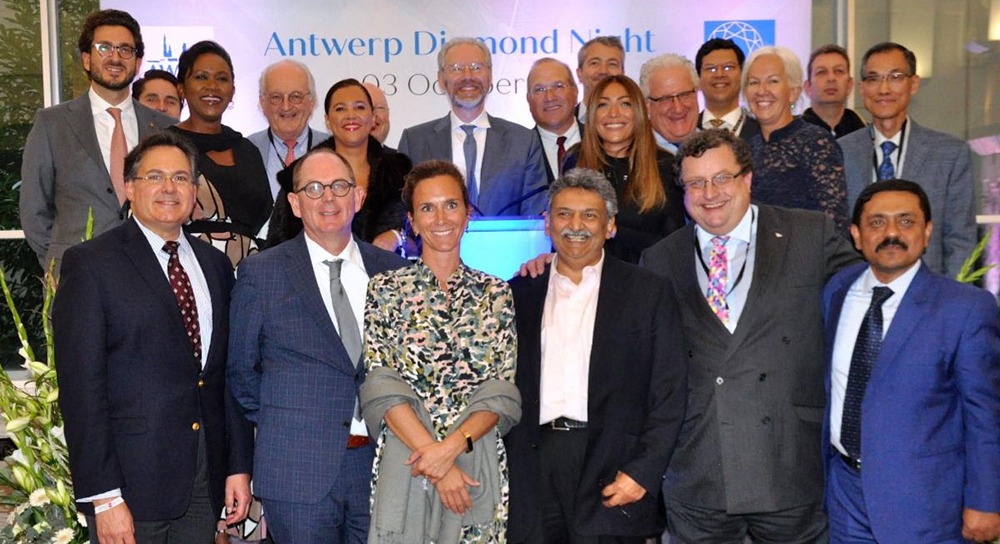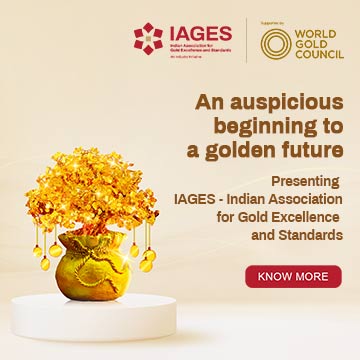At the Annual General Meeting (AGM) of World Diamond Council (WDC) on October 2 and 3, 2019 in Antwerp, Belgium, the discussions were mostly about the pending conclusion of the Kimberley Process’ review and reform process; and the related call by WDC and others that it includes a strengthening of the scope of the Kimberley Process Certification Scheme (KPCS).
Speaking to the gathering, WDC President Mr Stephane Fischler, said that when the KP Plenary meets in New Delhi, India, during November 18-22, focus should be on strengthening the definition of “conflict diamonds,” so that the types of systemic violence being seen in certain diamond-mining areas be addressed and also that the KP should discuss how the new definition will be implemented and verified.
Several amendments to the conflict diamonds definition are currently being considered by the KP, including a proposal tabled by Canada, which had been formulated together with WDC and the Civil Society Coalition, and others by Botswana and Russia.
In his report to the AGM, Mr. Stephane Fischler said, “We are still far from a final agreement, but I believe that there is now a general awareness that a new and strengthened scope will indeed be of benefit to the KP and all its stakeholders. These are extremely complex negotiations, where the North-South divide is apparent, and where different historical contexts must be acknowledged, for they shape perceptions and understandings.”
He also stressed that, with the strengthened scope, the role of the KPCS must remain relevant. The KPCS should not be regarded as a sanctions mechanism, he said, but rather as a system that prevents instances of violence and conflict, and in so doing facilitates capacity building in the mining areas, as well as protecting consumer confidence in the diamond.
A key element in the WDC’s program to support the integrity of the diamond value chain is its updated System of Warranties (SOW), whose scope extends beyond that of the KPCS, covering both the rough and polished diamond trade, and directly referencing international conventions on human and labor rights, anti-corruption and anti-money laundering (AML). Delegates to the AGM discussed a toolkit that currently is being developed to assist members of the industry in their implementation.
Continuing his address, Mr. Fischler said: “We are all aware of the pressures upon us to be more transparent, particularly concerning the provenance of our products and the due diligence mechanisms being applied to ensure their integrity,” Mr. Fischler said in his report. “The new WDC System of Warranties will certainly contribute, and we are looking forward to providing the industry with the tools necessary for using the mechanism throughout the whole supply chain. Its impact on small and medium businesses specifically could be profound.”
Mentioning KP’s review and reform program, Mr. Fischler said that “there have been successes chalked up.” These include WDC’s proposal to establish a permanent secretariat to better support the work of KP. It was formally accepted, and the new body is currently being planned by a sub-committee headed by Peter Karakchiev, a WDC board member. It will replace the Administrative Support Mechanism that today is being run by the AWDC with the support of other WDC Members. WDC has committed to co-finance the Permanent Secretariat.
Mr. Fischler also reported that the WDC has contributed to the discussion about the creation of a Multi-Donor Fund that will be established to finance the participation in the KP forum of countries with limited capacity, as well as members of the Civil Society Coalition, and supports an improved Peer-Review Mechanism.
The AGM discussed the ongoing situation in the Central African Republic (CAR), which is the only country today from which the KP has ruled that conflict diamonds are being traded. In 2015, after an absence, the CAR was readmitted into the KPCS within a special operational framework that was created to ensure the strict traceability of goods, which only can be sourced from especially approved “green” mining zones. As part of the process, the KP set up a Monitoring Team that is currently chaired by the United States and includes representatives from relevant working groups, civil society, and the WDC.
During the AGM, notification was received from the CAR government that it was planning an overhaul of its alluvial diamond mining sector, which will include the introduction of a regime based on OECD due diligence principles. Responding to the announcement, Mr. Fischler said that the WDC would encourage such a program, but he stressed that all members and companies from the industry must remain on the alert and conduct their due diligence to ensure that any CAR-sourced rough diamonds they purchase are KP-compliant. He also called on the countries neighboring the CAR and those that are home to trading centers to practice enhanced vigilance, to prevent conflict diamonds from accessing their territories.
Mr Fischler also noted the contribution to two WDC officers, Peter Karakchiev and Mark van Bockstael, the current of former chairs of the KP’s Working Group of Diamond Experts, who successfully petitioned the World Customs Organization to introduce a new international six-digit code into its HS system, which relating specifically to “synthetic diamond, un-worked or simply sawn or roughly shaped.” Until now, rough man-made diamonds have been grouped with all other synthetic stones.
During his speech to the industry dinner that closed out 2019 AGM, Mr. Fischler paid special tribute to Marie-Chantal Kaninda, WDC’s outgoing Executive Director. “Through her personality, history, and understanding, she has instilled within us a sensibility and broader perception of our industry that will remain long after her departure. We wish her the very best of luck,” he said.
At the gala dinner, Mr. Fischler pointed out that 95 percent of rough diamonds in terms of value are mined by a handful of larger, industrialized companies, which over the years have delivered transformative change in the countries where they operate. The remaining 5 percent is produced by artisanal miners. These are considered to be at higher risk, and thus command most of the attention of the KP and the WDC.
“We are an industry that understands that when we are talking about 5 percent of the total value, we are not simply referring to dollars and cents. We are referring to diamonds whose derived revenue might potentially make a massive impact on the lives of people in the countries where they are sourced. This is the industry of which I have been a part of for more than 40 years, and a community of women and men of whom I am incredibly proud,” Fischler concluded.
The AGM was hosted by the Antwerp World Diamond Centre (AWDC), which also organized an industry dinner at the Antwerp Diamond Bourse on October 3 to celebrate the WDC.


